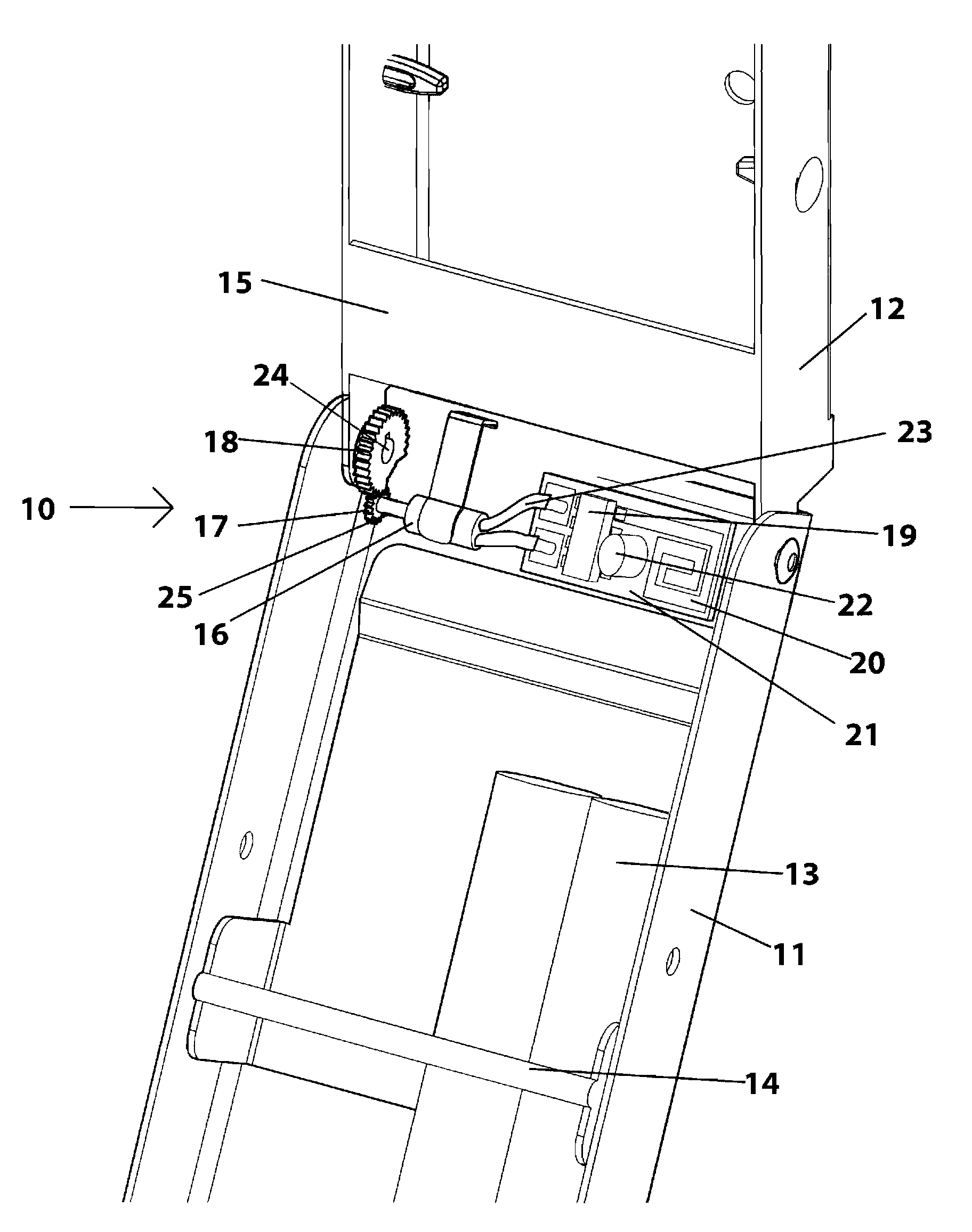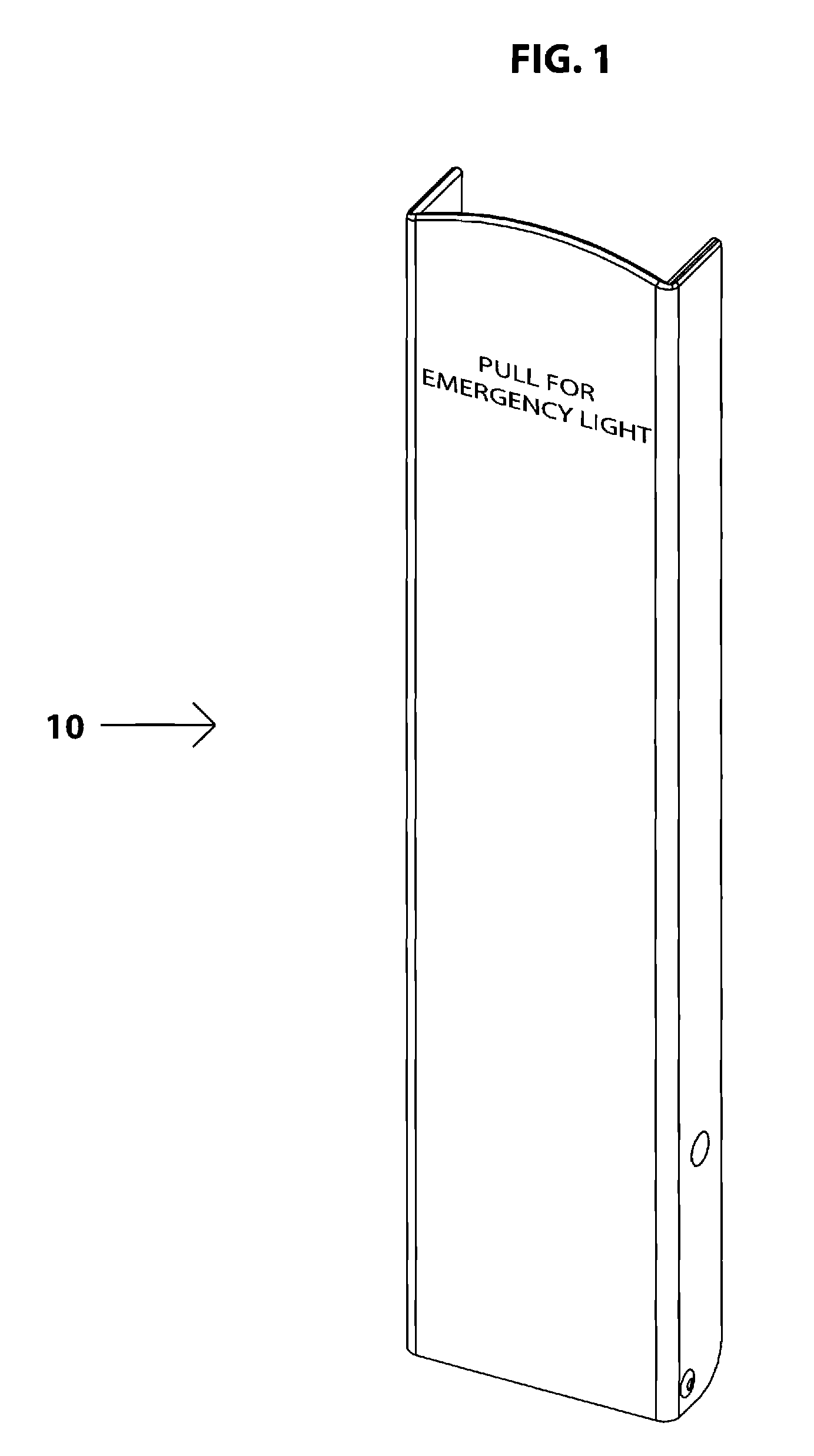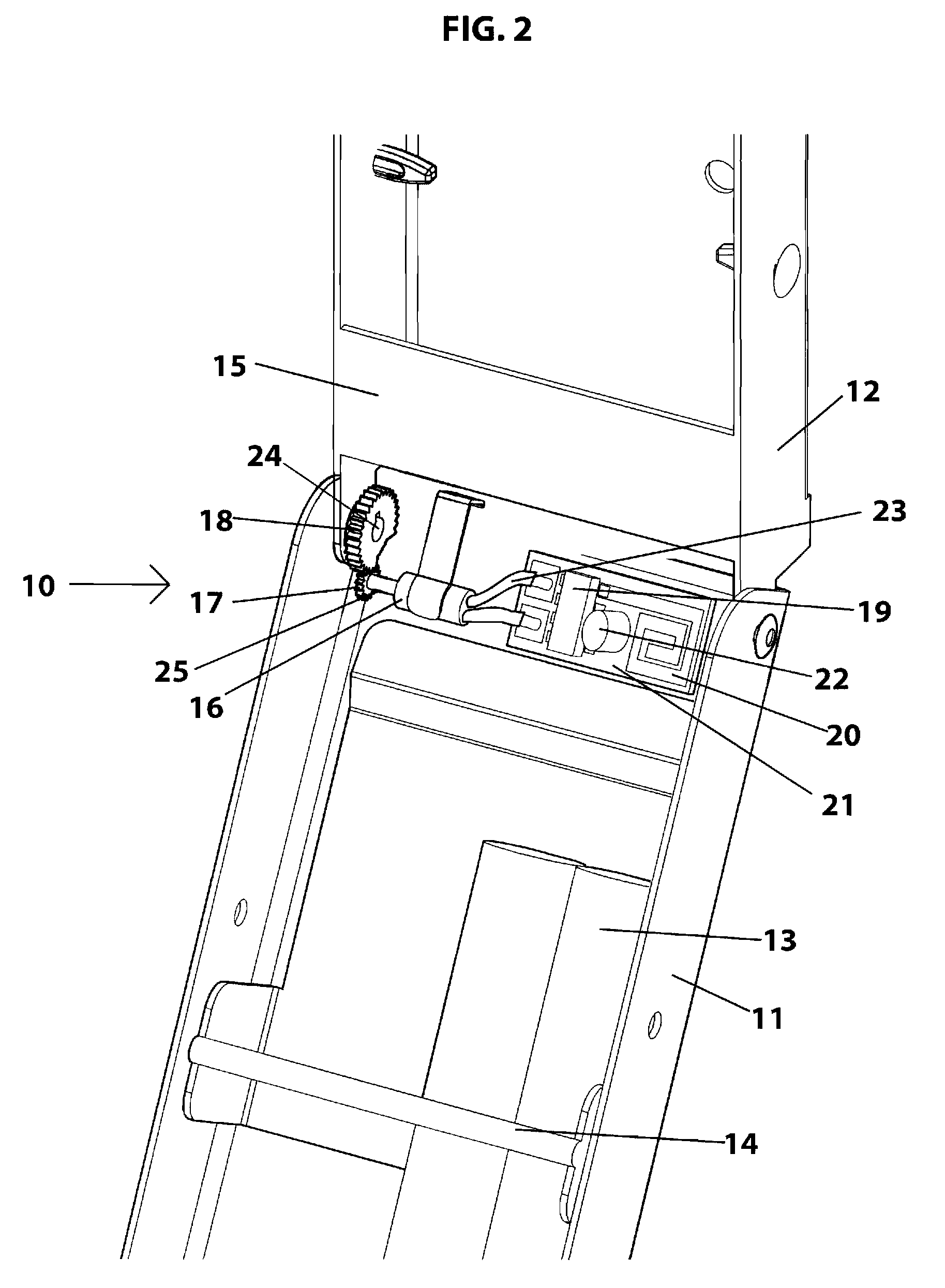Emergency light station with mechanically activated radio frequency signaling
a technology of radio frequency signaling and emergency light, which is applied in the direction of lighting and heating equipment, transportation and packaging, and can solve the problems of difficulty in evacuation from a train or airplane wreck, difficulty in evacuating an area during an emergency, and loss of ambient lighting
- Summary
- Abstract
- Description
- Claims
- Application Information
AI Technical Summary
Benefits of technology
Problems solved by technology
Method used
Image
Examples
Embodiment Construction
[0044]Referring to FIG. 1, an emergency light station (10) with radio frequency signaling is provided. As previously described the light station contains a plurality of lightsticks. When the container cover is opened, a portion of these lightsticks are automatically activated and made available to the user. Before opening, the light sticks are protected by the container from light exposure, accidental activation and theft. Now, referring to FIG. 2, Front cover (11) is hinged with respect to mounting base (12). Upon opening, chemiluminescent lightstick(s) (13) which are disposed in the container are submitted to a bending force created by interaction of breaker bar (14) and retainer plate (15). At some point, the force on chemiluminescent lightstick (13) is sufficient to cause it to be activated. Gear (18), is non-rotatably attached to mounting base hinge pin (24), said pin being non-rotatably attached to mounting base (12).
[0045]Gear (18) meshes with drive gear (17) and causes drive...
PUM
 Login to View More
Login to View More Abstract
Description
Claims
Application Information
 Login to View More
Login to View More - R&D
- Intellectual Property
- Life Sciences
- Materials
- Tech Scout
- Unparalleled Data Quality
- Higher Quality Content
- 60% Fewer Hallucinations
Browse by: Latest US Patents, China's latest patents, Technical Efficacy Thesaurus, Application Domain, Technology Topic, Popular Technical Reports.
© 2025 PatSnap. All rights reserved.Legal|Privacy policy|Modern Slavery Act Transparency Statement|Sitemap|About US| Contact US: help@patsnap.com



